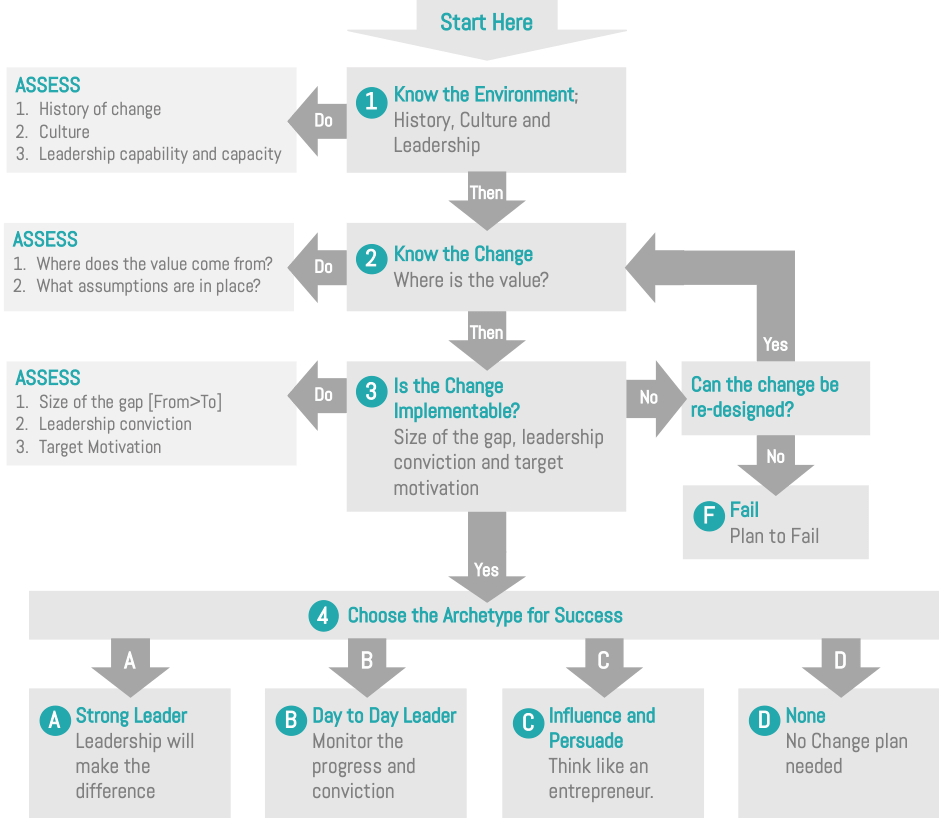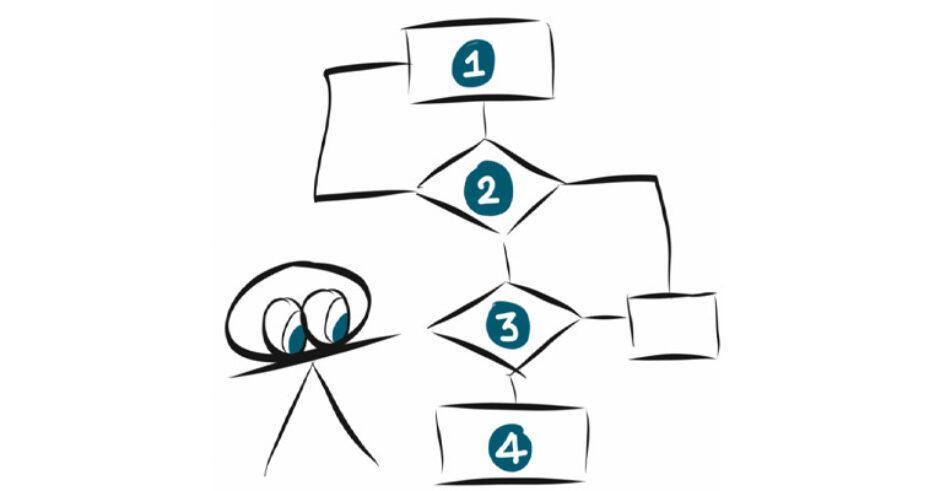In the three killer questions to ask of any change we suggested that there are four archetypes or approaches to successfully delivering organisational change.
Knowing the archetype that will be most successful allows you to work smarter not harder.
The archetype is determined by the scale of the change and the leadership conviction. It is not something that you, the change agent, get to choose.
To get to the archetype there is a four-step process
1. Know the environment
This is the foundation layer and is not specific to the change.
- Assess the history of change; is there a strong muscle in making change successfully?
- What is the current culture?
- What is the track record of the leaders in successfully leading change?
- Do the leaders have the capacity to lead?
2. Know the change
Understand what targets will be asked to do differently and why.
- What is the change?
- What are the assumptions which underlie the change?
- Where does the value come from?
3. Is the change implementable?
The gap between the environment (from) and the desire (to) give the final insight
- How big is the gap?
- Is there enough leadership conviction to make the change?
- Will the targets be motivated enough?
4. The Archetype
The data from the previous three steps determine the archetype, the likely success of your change and your ability to deliver the outcomes. The Three Question tool guides you through the mapping.
The flowchart walks you through the steps and choices.

The four archetypes are not equal, they have different chances of success.
- Strong Leader [Most successful]
- Day to Day Leader
- Influence and Persuade [Least successful]
- None
Let us look at each one individually
Strong Leader
Basis: You have a high impact or high-risk change and senior leaders with the conviction to see the change through. They will apply consequences to those who do not adopt the change. This is the most successful archetype.
Success rating: 4-5 out of 5
Style: Coach the credible leaders to lead the change effectively, advise on the language, behaviours and communications which will be successful. Layer other communication vehicles that support and expand their (authentic) leadership.
Time to outcome: Fast, once teams see their leaders authentic conviction.
Measure: Proactively monitor and manage the leadership conviction, course correcting or amplifying the leaders behaviours if needed.
Day to Day Leader
Basis: You have a low impact or importance change and leaders who have the conviction to adopt it.
Time to outcome: Medium, risk of other priorities taking precedence.
Success rating: 3-4 out of 5
Style: Remind leaders of the importance and the role that they play, over a longer period of time.
Measure: Monitor progress and course correct if necessary. Watch for competing priorities or a loss of conviction.
Influence and Persuade:
Basis: A high impact change, but the leaders have neither the capability or conviction to lead the change and apply consequences for non-adherence. Your results are already compromised. Ironically this is the most common change strategy that is employed by change agents.
Time to outcome: Slow, building social pressure takes time and often fails
Success rating: 1 out of 5
Style: Think like an entrepreneur; you need to sell the change to each target, one by one by one in the hope that you can build enough social pressure to change. Imagine opening a coffee shop and waiting for customers to come in and buy your coffee.
Measure: Level of traction within the target population, influencer sentiment, competing priorities.
None
You have a low impact change, one that does not need any behaviour change at all – like cabling an office. Just do it.
What next
Once the archetype is clear, the approach, resource and communications plans are easily created.
Yes, But?
What if I can’t coach or change the leaders, what then?
Look for others who may be better placed to coach your leaders, as change agents and architects we don’t always have the relationship or are the best people to have the conversations.
My archetype is Influence and Persuade, help!
Think like an entrepreneur; think about recruiting marketing and sales people to your change team. Those that can pitch a product to others. In parallel see if you can bring about the conviction of the credible leaders.
Expect the change to take longer than expected. Work out what is the minimum required for success and/or your own survival as a change agent.
What about the tools to measure?
They are coming to The Change Wizard over the next few months, keep an eye out for them on our Tools page. Start with the Three Killer Questions


